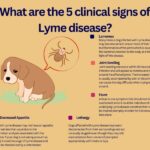How Long To Quarantine Dog With Ringworm
How Long to Quarantine Dog with Ringworm: A Comprehensive Guide for Pet Owners
Ringworm is a common fungal infection that can affect dogs of all breeds and ages. While it is not usually serious, ringworm can be contagious to humans and other animals, and can cause discomfort and skin lesions in dogs. Therefore, it is important to quarantine your dog if they have ringworm, but how long should you do so? In this article, we will explore the answer to this question in detail, along with some practical tips on how to deal with ringworm in dogs.
What is Ringworm in Dogs?
Ringworm, also known as dermatophytosis or tinea corporis, is a type of fungal infection that affects the skin, hair, and nails of dogs (and other mammals). Despite its name, ringworm is not caused by worms but by fungi called dermatophytes that thrive in warm and humid environments. Ringworm spores can survive for months in the environment and can be transmitted through direct contact with infected animals or contaminated objects (such as bedding, grooming tools, or soil).
Symptoms of ringworm in dogs may include circular or irregular patches of hair loss, scaly or crusty skin lesions, redness or inflammation, itching or scratching behavior, and sometimes secondary bacterial infections. Not all dogs with ringworm show symptoms, especially those with strong immune systems or short-haired coats. However, even asymptomatic carriers can spread the infection to others.
How Do You Diagnose Ringworm in Dogs?
If you suspect your dog has ringworm based on their symptoms or exposure history (e.g., being around other infected animals), you should take them to a veterinarian for diagnosis and treatment. The vet may use different methods to confirm ringworm in dogs, such as:
– Wood’s lamp examination: This involves shining a special ultraviolet light on the dog’s skin and hair to detect fluorescence of ringworm spores. However, this method is not always reliable and may miss some cases of ringworm or produce false-positive results.
– Fungal culture: This involves collecting samples of the dog’s skin or hair and growing them in a special medium to see if dermatophytes grow. This method is more accurate but takes longer (about 2-4 weeks) to get results.
– Microscopic examination: This involves looking at the dog’s skin or hair samples under a microscope to see if there are fungal elements present. This method can be quick and inexpensive but may also miss some cases of ringworm or confuse it with other skin conditions.
Once your dog has been diagnosed with ringworm, you need to start treating them as soon as possible and take measures to prevent the spread of infection.
How Do You Treat Ringworm in Dogs?
The treatment of ringworm in dogs typically involves a combination of topical and systemic antifungal medications, as well as hygiene and environmental management. The specific regimen depends on the severity, location, and extent of the infection, as well as the age, health status, and breed of your dog.
Topical treatments for ringworm in dogs may include medicated shampoos, creams, ointments, or sprays that contain antifungal drugs such as miconazole, clotrimazole, ketoconazole, terbinafine, or enilconazole. These products are applied directly to the affected areas of your dog’s skin or coat and are usually given once or twice daily for several weeks. Topical treatments may also help soothe itching or inflammation and reduce secondary bacterial infections.
Systemic treatments for ringworm in dogs may include oral antifungal drugs such as griseofulvin, itraconazole, fluconazole, or terbinafine. These drugs are absorbed into your dog’s bloodstream and can reach the deeper layers of the skin or hair follicles where ringworm may hide. Systemic treatments are usually given for several weeks or months, depending on your dog’s response to therapy and any side effects that may occur (such as gastrointestinal upset or liver damage).
Hygiene and environmental management for ringworm in dogs may include:
– Isolating your dog from other pets or people until they have been treated and cleared of infection.
– Cleaning and disinfecting your dog’s living areas, bedding, toys, and grooming tools with a bleach solution or antifungal spray.
– Vacuuming or sweeping your home regularly to remove any shed hair or spores from infected animals.
– Washing your hands thoroughly after handling your dog or their belongings.
It is important to follow your veterinarian’s instructions carefully and complete the full course of treatment for ringworm in dogs, even if your dog appears to be cured before the end of the treatment period. This is because ringworm can recur if not fully eliminated, and can also develop into more serious fungal infections in immunocompromised dogs.
How Long to Quarantine Dog with Ringworm?
Now that you know how to diagnose and treat ringworm in dogs, let’s focus on the main question: how long should you quarantine your dog if they have ringworm? The answer depends on several factors, such as:
– The severity and extent of your dog’s ringworm infection.
– Whether your dog has shown symptoms of ringworm or not.
– Whether you have other pets or humans who may be at risk of infection.
– Whether you have taken measures to prevent further exposure to spores.
In general, most veterinarians recommend that you quarantine your dog with ringworm for at least 3 weeks after starting treatment. This means keeping them away from other animals and people who are not treating them, confining them to a single room or crate if possible, and avoiding direct contact with their skin or hair. You should also wear gloves and wash your hands before and after handling your dog or their belongings.
After 3 weeks, you can re-evaluate your dog’s condition and consult with your veterinarian to see if they need to continue treatment or if they can be released from quarantine. If your dog still has visible lesions or positive fungal cultures, they may need to stay in isolation for a longer period or receive additional medications. If your dog has no signs of ringworm and has completed their treatment as prescribed, they may be considered non-infectious and safe to interact with other animals and people.
However, even after your dog is released from quarantine, you should still monitor them for any signs of recurrence or new infections, and continue to practice good hygiene and environmental management to prevent the spread of ringworm. This includes washing your dog regularly with antifungal shampoos, disinfecting their living areas frequently, and avoiding contact with stray animals or contaminated environments.
In conclusion, although ringworm in dogs is not a serious health threat in most cases, it can cause discomfort and inconvenience for both pets and owners. By taking prompt action to diagnose and treat ringworm in dogs, as well as following the proper protocols for quarantine and prevention, you can help ensure the best outcome for your furry friend. Remember that every case of ringworm is unique, so always consult with a qualified veterinarian for personalized advice on how to care for your dog’s specific needs. And don’t forget to give them extra love and attention during this challenging time!



